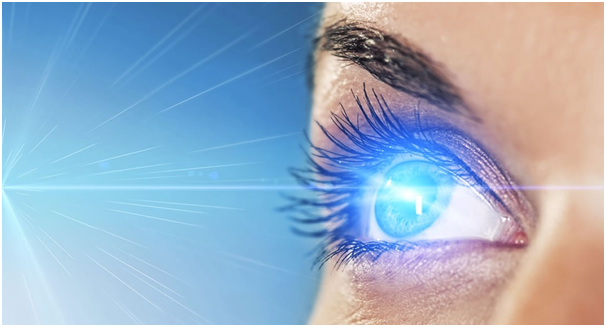Even though the effects that harmful UV-rays of the sun have on our skin are well known, a lot of people do not know how harmful they can be for our eyes too. Extended exposure to UV-rays can cause eye damage and diseases like cataracts, macular degeneration, and others. The damage our eyes suffer from UV rays is cumulative which means the more time we spend in the sun, the more damage our eyes go through. This is why it is extremely important for kids to protect their eyes too as protecting our eyes should start as soon as possible to prevent problems later in the future.
Fortunately, the damage suffered by our eyes from UV-rays of the sun can be prevented by taking a few simple precautions like avoiding going out when the rays of the sun are the most intense and wearing protective accessories like hats and sunglasses.
 The best kinds of sunglasses to protect your eyes against the harmful rays of the sun are polarized sunglasses with 100% UV-blocking capabilities. These sunglasses absorb the rays of the sun completely and protect your eyes from developing problems like cataracts and macular degeneration from prolonged exposure to the UV-rays of the sun.
The best kinds of sunglasses to protect your eyes against the harmful rays of the sun are polarized sunglasses with 100% UV-blocking capabilities. These sunglasses absorb the rays of the sun completely and protect your eyes from developing problems like cataracts and macular degeneration from prolonged exposure to the UV-rays of the sun.
What are Polarized sunglasses?
- Polarized sunglasses are specially designed sunglasses which are meant to absorb sunlight and reduce glare.
- Glare on the glass due to the rays of the sun often distort the image our eyes see and by absorbing the glare, polarized sunglasses produce sharper and better images.
- Even though some polarized sunglasses offer UV-protection, UV-blocking and polarized are different aspects. While polarized sunglasses reduce glare on our glasses, UV-blocking sunglasses block harmful UV-rays from entering our eyes and causing damage.
Polarized Sunglasses Test
Did you know you can test if your sunglasses are truly polarized sunglasses or not? Here is how you can check if your sunglasses are polarized or not.
- Find a reflective glass surface on which glare can be visible when a light shines on it.
- Shine a light on the surface so that there is a visible glare on the glass surface which is visible from at least 60 to 90 centimeters away.
- Hold the sunglasses in a way that allows you to see the glass surface through the lens of the sunglasses, which should ideally be held 15 to 20 centimeters in front of your eyes.
- Tilt the sunglasses upwards by about 60 degrees and look at the glare on the glass surface through the lens of the sunglasses.
- If your sunglasses are truly polarized then the amount of glare seen through the lens of the sunglasses should be less than the amount of glare that your eyes see.
Polarized sunglasses vs non-polarized sunglasses
To understand the difference between polarized sunglasses and non-polarized sunglasses, we must first understand what glare is and how it works.
When sunlight reaches the earth, it is absorbed, reflected and then refractive by all kinds of surfaces on the earth. When sunlight is refracted or reflected in a way that hits our eye in a direct horizontal line, we experience glare which leads to visual discomfort.
Normally sunglasses usually protect you from UV-rays but polarized sunglasses counter the glare by absorbing the rays of the sun.
Advantages of polarized sunglasses over non-polarized sunglasses include:
- Reduction in visual discomfort.
- Better vision clarity during day time.
- Reduction in eye strain.
- Reduction in glare and reflection.
Disadvantages of polarized sunglasses
Even though polarized sunglasses are very helpful in reducing glare and are useful in situations where you need to avoid glare like driving, fishing and other activities normally conducted in intense sunlight.
Here are some disadvantages of polarized sunglasses:
- Reading LCD / LED screens is really hard to read when you’re wearing polarized sunglasses. For activities which require working in extreme sunlight and also reading screens at the same time, polarized sunglasses do not work well. Therefore, pilots cannot wear polarized sunglasses when they are flying.
- Skiers also have problems with polarized sunglasses because it is difficult to determine the difference between snow and ice patches.
- Depending on the brand, polarized sunglasses can offer UV-rays protection but just because a pair of sunglasses are polarized that doesn’t mean they also offer UV-rays protection. Therefore polarized sunglasses should be checked out to ensure they offer UV-rays protection if that’s what you’re looking for.
Conclusion
Even though our eyes only cover around 2 percent of the surface area of our whole body surface, it is the only organism that allows us to experience sight. By taking steps to protect our eyes from UV-rays by investing in polarized and UV-protecting sunglasses, we protect our eyes for the future and prevent diseases like cataracts, macular degeneration, and others.



 (3 votes, average: 3.67 out of 5)
(3 votes, average: 3.67 out of 5)









